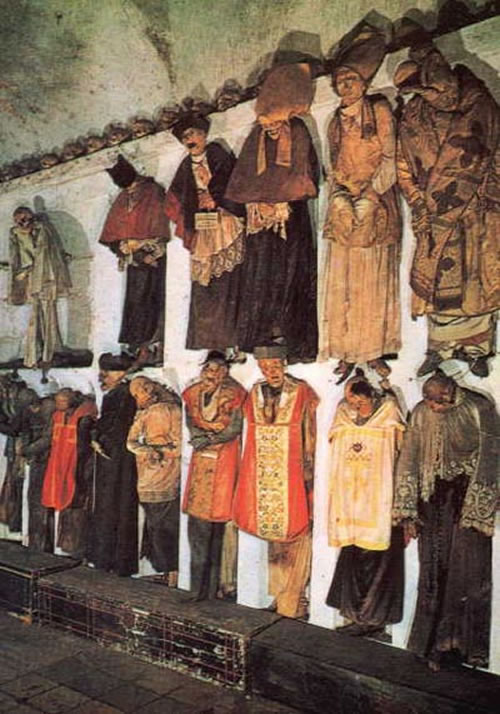We have visited a lot of places in our travels throughout the years, but this has to be one of the most unique places we have ever visited. The missionaries all told us it was something we had to see--so we did.
Catacombe dei Cappuccini
From Wikipedia, the free encyclopedia
The Capuchin Catacombs of Palermo (also Catacombe dei Cappuccini or Catacombs of the Capuchins) are burial catacombs in Palermo, Sicily, southern Italy. Today they provide a somewhat macabre tourist attraction as well as an extraordinary historical record.
Palermo's Capuchin monastery outgrew its original cemetery in the 16th century and monks began to excavate crypts below it. In 1599 they mummified one of their number, recently dead brother Silvestro of Gubbio, and placed him into the catacombs.
The bodies were dehydrated on the racks of ceramic pipes in the catacombs and sometimes later washed with vinegar. Some of the bodies were embalmed and others enclosed in sealed glass cabinets. Monks were preserved with their everyday clothing and sometimes with ropes they had worn as a penance.
Originally the catacombs were intended only for the dead friars. However, in the following centuries it became a status symbol to be entombed into the Capuchin catacombs. In their wills, local luminaries would ask to be preserved in certain clothes, or even to have their clothes changed at regular intervals. Priests wore their clerical vestments, others were clothed according to the contemporary fashion. Relatives would visit to pray for the deceased and also to maintain the body in presentable condition.
The catacombs were maintained through the donations of the relatives of the deceased. Each new body was placed in a temporary niche and later placed into a more permanent place. As long as the contributions continued, the body remained in its proper place but when the relatives did not send money any more, the body was put aside on a shelf until they resumed payment.





Whoa that place is interesting. I know lots of people would not like it, but I've been told before that I'm a little morbid, so I find it fascinating.
ReplyDeleteI think it is fascinating but I would not like my dead body hung like that.
ReplyDelete